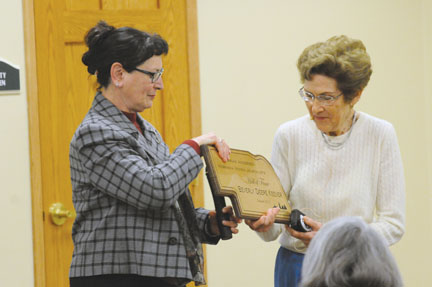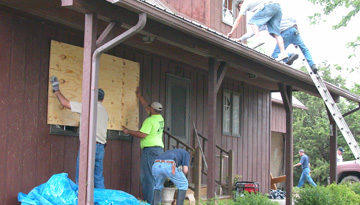Former Thayer County Local and Vietnam War Correspondent Named in Hall of Fame
When asked how she, a farm girl from Thayer County, Nebraska, became the longest serving western Vietnam War correspondent, Beverly Keever’s answer was simple: right place at the right time.
The since retired reporter depicted her time in the war zone in her book “Death Zones and Darling Spies” which she discussed at her presentation at the Hebron Assisted Living Facility.
Keever was 26 years old when she set foot in Vietnam in 1961.
“Not many had heard of Vietnam,” she said. “Including me.”
Inspired by geography lessons in her small country school near Carleton, Keever wished to travel the world.
After graduating college, Keever worked two years to save up money for a trip to Asia with friends.
When her friends couldn’t go, she decided that instead of blowing her money, she would continue with her plans to travel abroad.
Originally, she planned to stay in Vietnam for two weeks: her real dream was to see China.
However, Keever arrived in the tiny, southeast Asian country as President Kennedy sent in helicopter support units. It only got more interesting from there.
In 1962, the presidential palace was bombed and Keever found herself with a front row seat to a brewing war.
“The story just got better and better and involved more and more American troops,” said Keever.
Keever freelanced for papers such as the Christian Science Monitor, the New York Herald Tribune and the State Journal.
Because she was not tied to one specific paper, Keever was free of deadlines and could travel outside of Saigon, now named Ho Chi Minh City, as she pleased.
She ventured out on missions with American combat units and interviewed many Viet Cong members, captured or defected.
Influential in her understanding of the war and Vietnamese people were her two interpreters: Pham An Zuan An and Nguyen Hung Vuong. The two were close friends but it wasn’t until after Keever returned to the states that she discovered that both had been spies: each for a different side.
“This didn’t affect my copy I feel,” said Keever. “But [it] gave me a much better insight as to what was going on in Vietnam.”
Keever interviewed natives, the Viet Cong and even a monk who famously protested by burning himself alive only several days after she spoke to him. She covered death zones near Kham Duc, received a Pulitzer Prize nomination for her reporting of the siege of Khe Sanh and even predicted that the United States would lose Southeast Asia.
Keever left Vietnam in 1969 and married her husband Chuck who had been ordered to escort her around Vietnam.
“I thought when I left it would be over peacefully,” said Keever.
However, the fighting continued, though Keever did not return.
She hopes the world will learn from Vietnam but fears its lessons have already been forgotten with the war in the Middle East.
At the end of her presentation, a representative of Nebraska Press Women announced Keever is being named to the Marian Andersen Nebraska Women Journalists Hall of Fame, and presented her with a plaque recognizing that honor.
“It was a tremendous honor,” said Keever. “I know there are a lot of women who have pioneered in journalism and a lot going on today, too.”
Keever, who retired from teaching journalism in 2008 from the University of Hawaii, recently donated her photos and notes from the war for research purposes to the University of Nebraska.
She hopes it will inspire students seeking journalism careers, particularly Native American women who, perhaps like the Vietnamese natives she met, “have wonderful stories they can tell and are sometimes the only ones that can tell them.”


